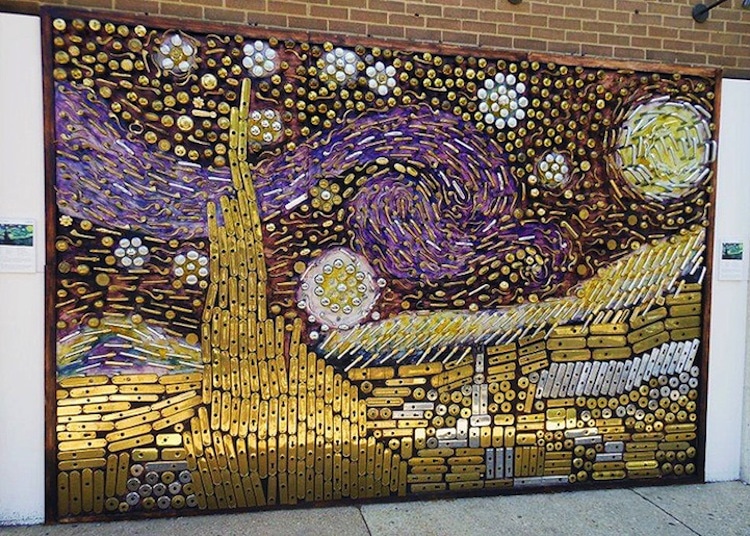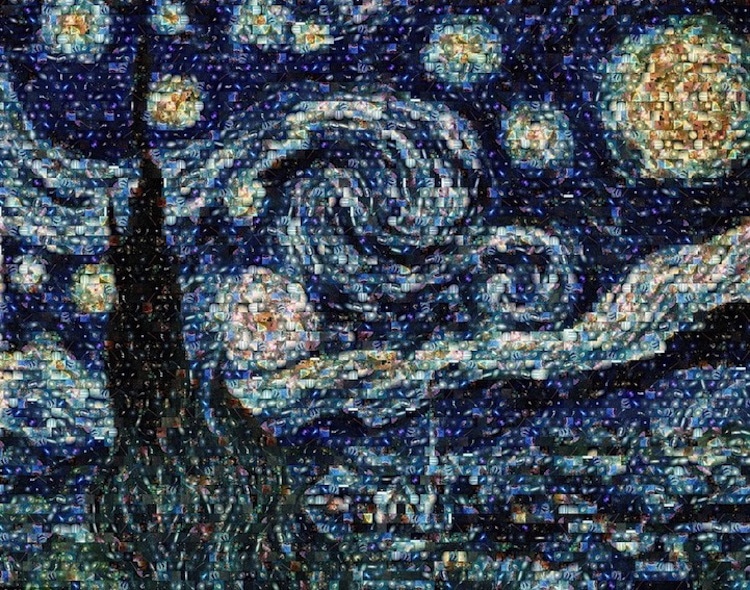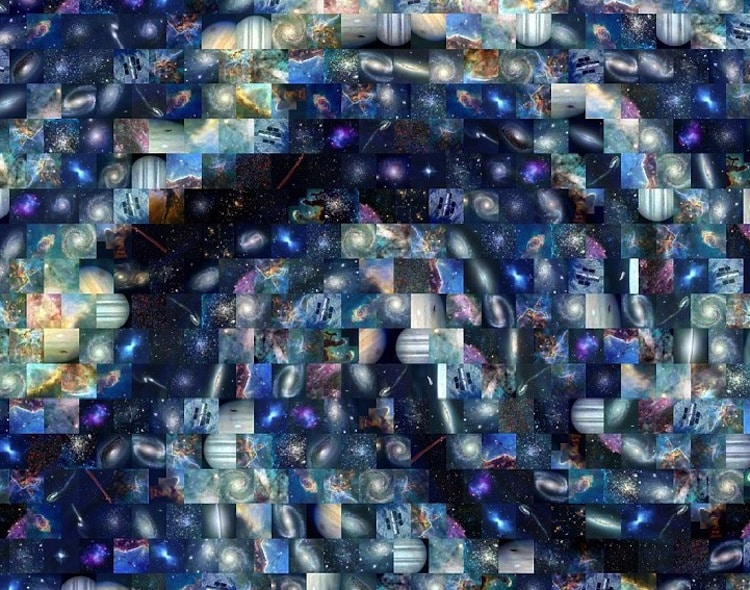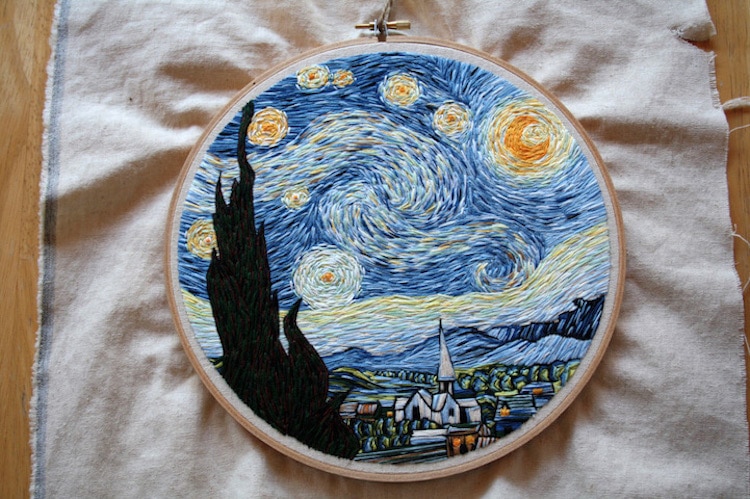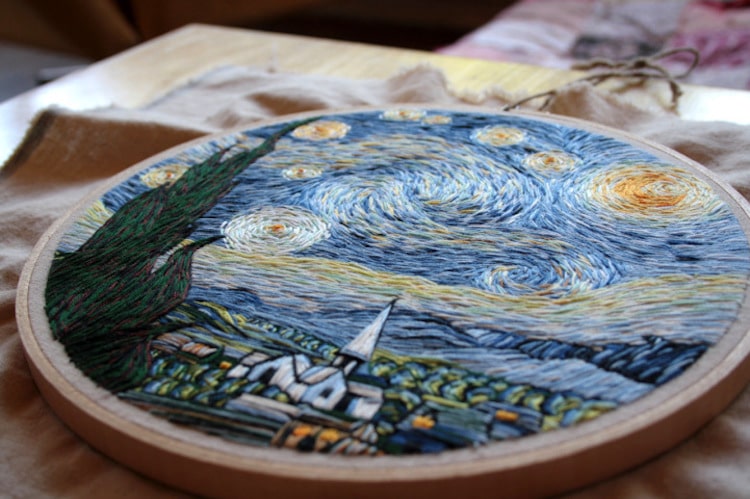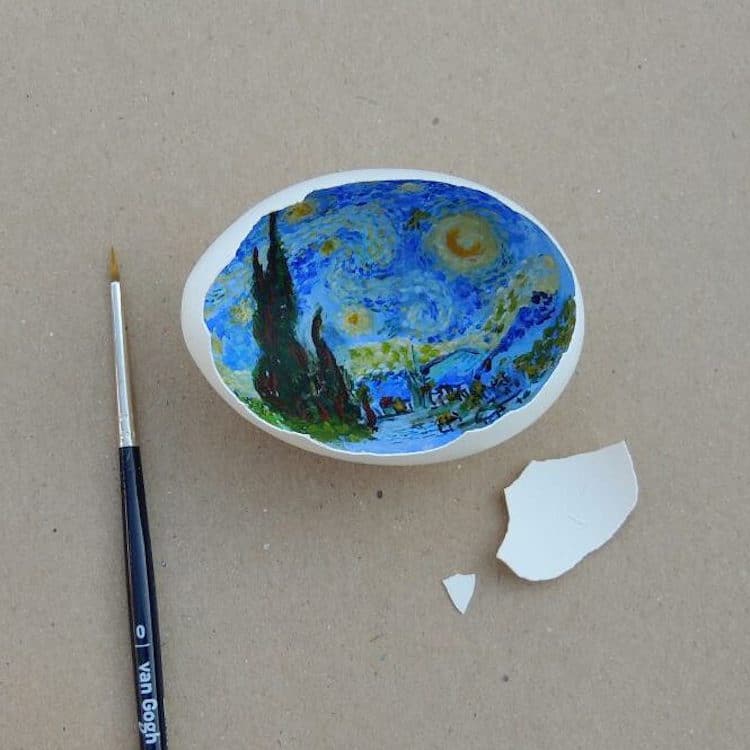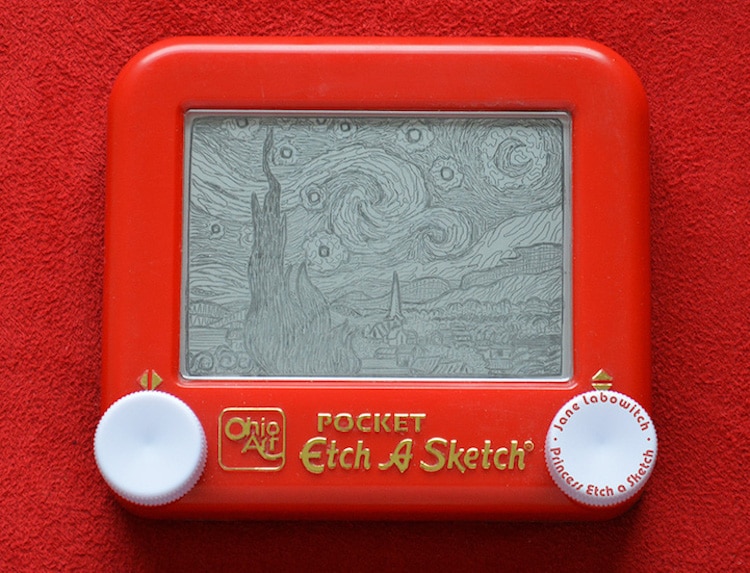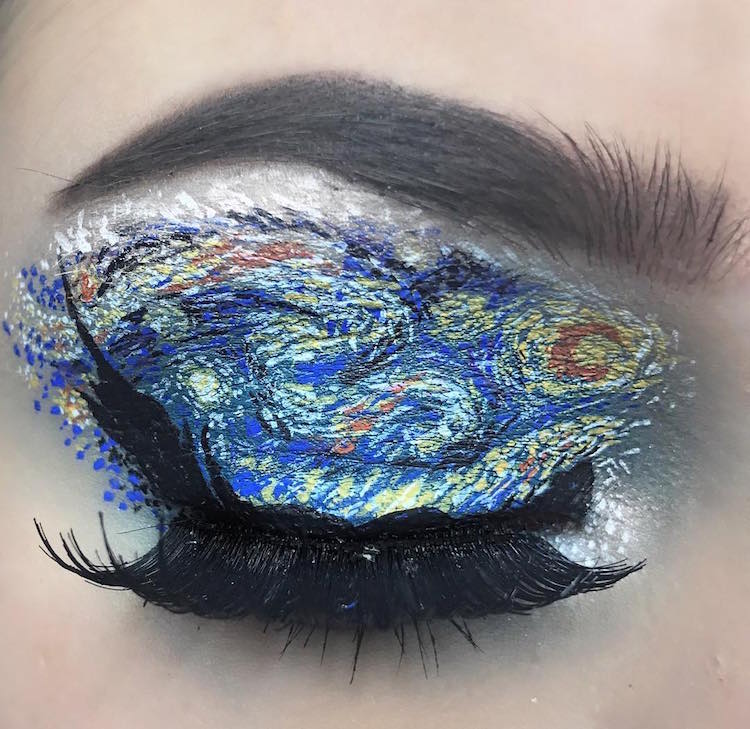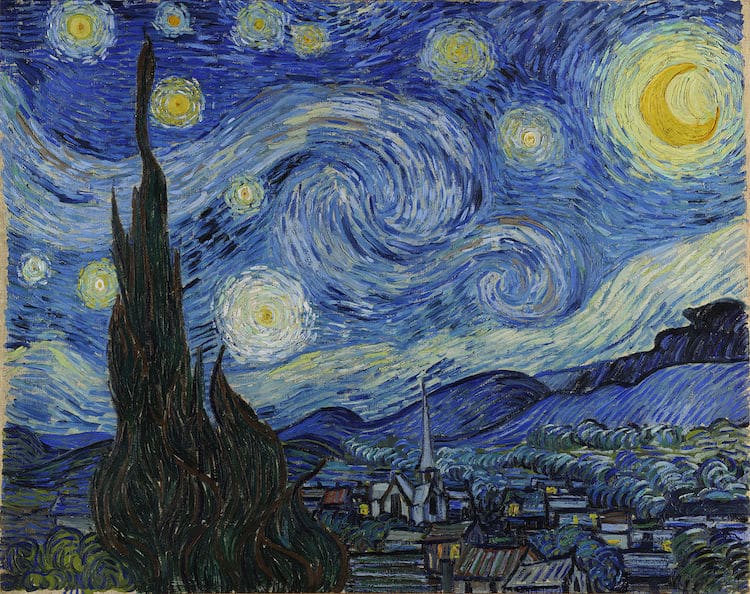
Vincent van Gogh, ‘The Starry Night’ (1889)
Oil on canvas, 29 x 36 1/4″
Vincent van Gogh is arguably one of the most iconic artists of all time with a well-known and universally adored body of work. As a pioneering Post-Impressionist painter, Van Gogh played a key role in paving the way for modern art. Among his many famous paintings, The Starry Night (1889), a piece produced late in the artist’s career, has a particularly important place in art history. To understand its profound impact, one must explore the context, content, and influence of the magical masterpiece.
Listen beautiful relax classics on our Youtube channel.
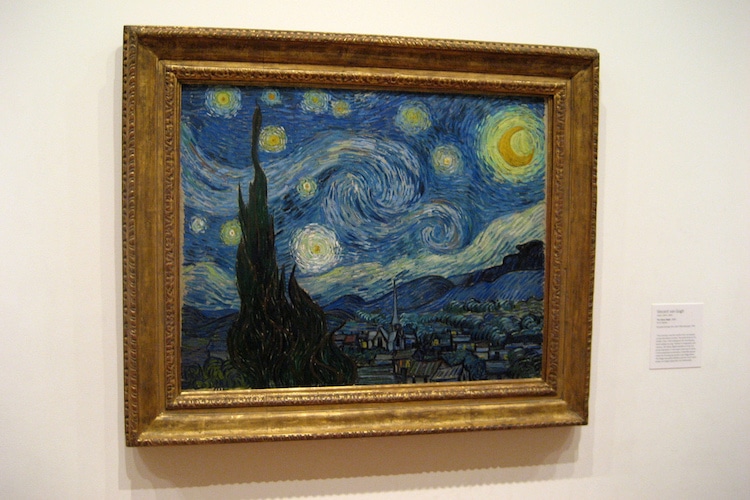
Photo: Wally Gobetz
History
On top of his revolutionary oeuvre, Vincent van Gogh is known for his struggles with mental illness and consequently tragic life. Born in 1853, the artist was only 37 when he died of a self-inflicted gunshot wound while being voluntarily treated at a mental health facility in the South of France. While committed, he produced an unprecedented amount of artwork. Eventually, these pieces would be compiled into the Saint-Paul Asylum, Saint-Rémy series, which includes important canvases like his Self-Portrait with a Bandaged Ear, The Irises, Wheat Field with Crows (his last painting), and, of course, The Starry Night.
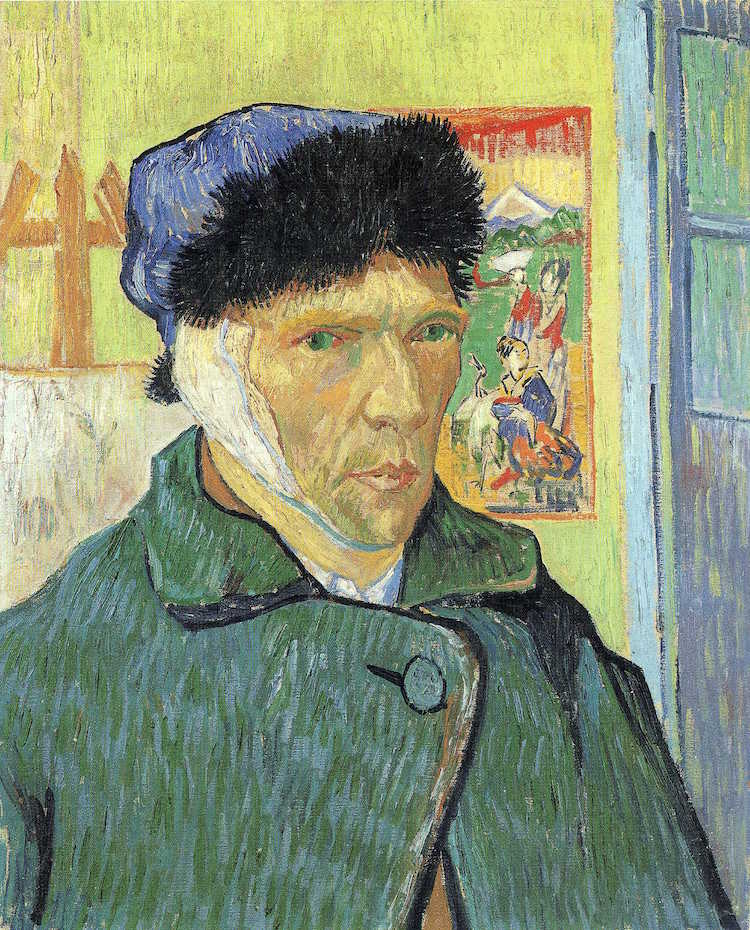
Self-Portrait with Bandaged Ear (1889
The Starry Night depicts a dreamy interpretation of the artist’s asylum room’s sweeping view of Saint-Rémy-de-Provence. Though Van Gogh revisited this scene in his work on several occasions, The Starry Night is the only nocturnal study of the view. Thus, in addition to descriptions evident in the myriad of letters he wrote to his brother, Theo, it offers a rare nighttime glimpse into what the artist saw while in isolation. “Through the iron-barred window I can make out a square of wheat in an enclosure,” he wrote in May of 1889, “above which in the morning I see the sun rise in its glory.”
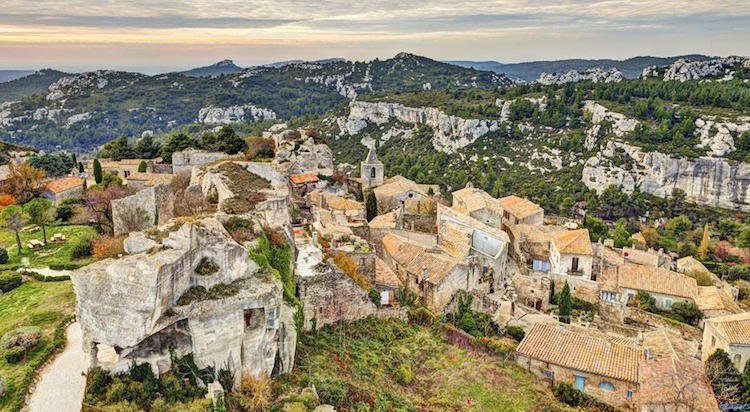
Saint-Rémy-de-Provence
Photo: Fine Dining Lovers
Aesthetic Importance
Rendered in the artist’s characteristic, Post-Impressionist style, The Starry Night features short, painterly brushstrokes, an artificial color palette, and a focus on luminescence. This artistic approach is particularly evident in the sky, which is composed of a thickly-applied tonal collection of blue and gold hues.
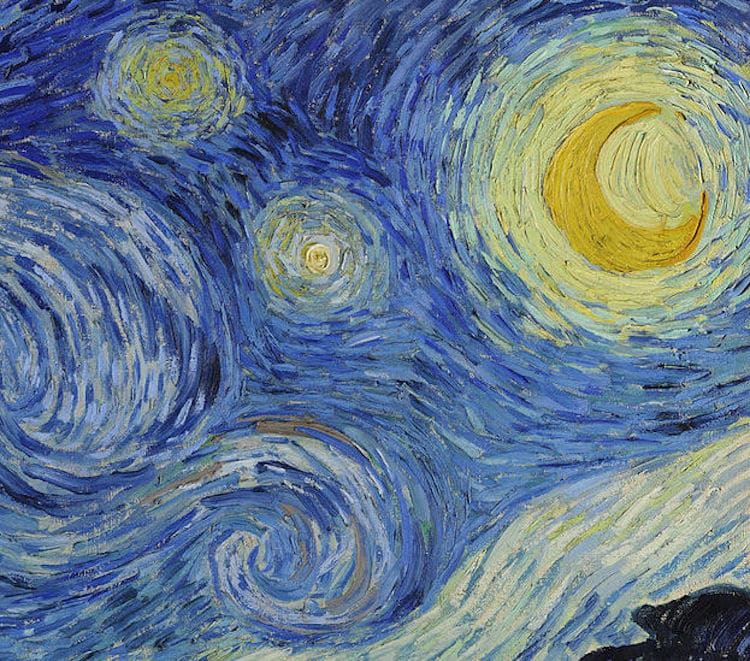
Brushstrokes detail
The ethereal painting’s balanced composition is composed of celestial swirls, stylized stars, a radiating moon, an idyllic village, and a sky-high cypress tree. While the depiction is based on his real-life view of the village, Van Gogh took some liberties when painting it.
The hamlet, including the prominent church spire (which is thought to be inspired by the architecture of his home in the Netherlands) is entirely imagined. Additionally, he poignantly opted to remove the prison-like bars of his window, illustrating his idealized approach to the painting and, perhaps, his longing to be free.
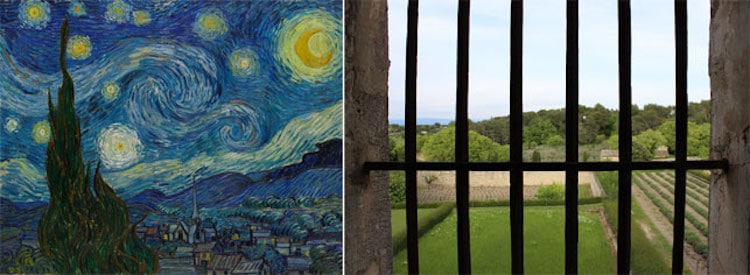
The view from van Gogh’s room
Photo: MoMA
Influence
Currently housed by the Museum of Modern Art in New York City, The Starry Night has touched and inspired many people since its conception. In fact, some contemporary artists have even reproduced the iconic piece using original materials. These unique media include:
Salt and Spices
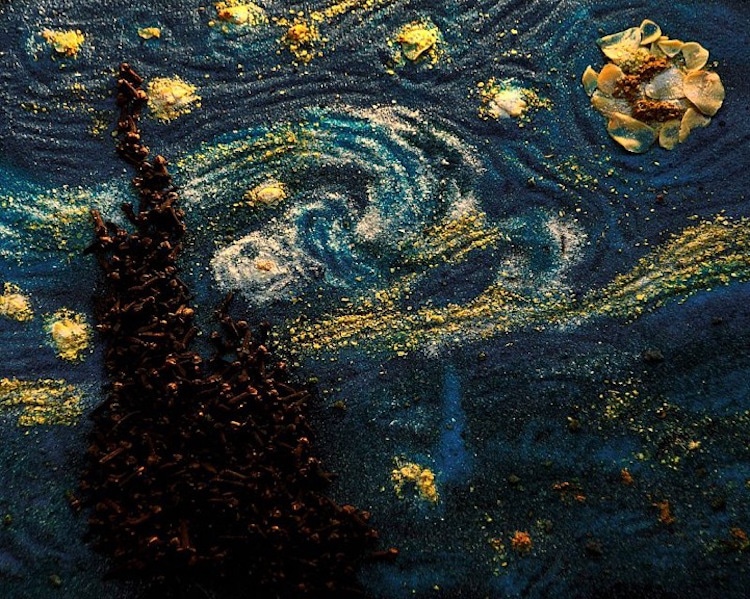
Read more: Painting with Salts and Spices
Jelly Beans
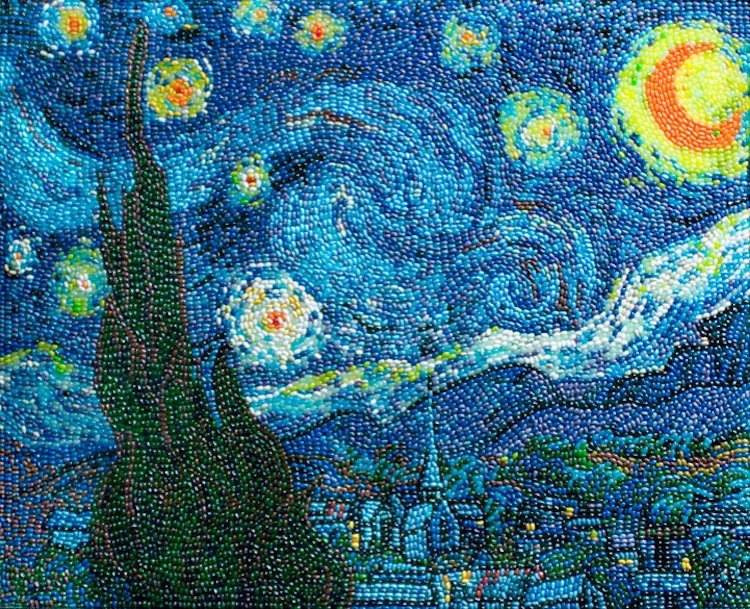
Read more: Classic Works of Art Made with Jelly Beans
Doorknobs
Photographs taken by the Hubble Space Telescope
Listen beautiful relax classics on our Youtube channel.
Torn Paper
Embroidery
Similarly, some artists have replicated the painting on unconventional canvases. These include:
An Eggshell
A Pumpkin
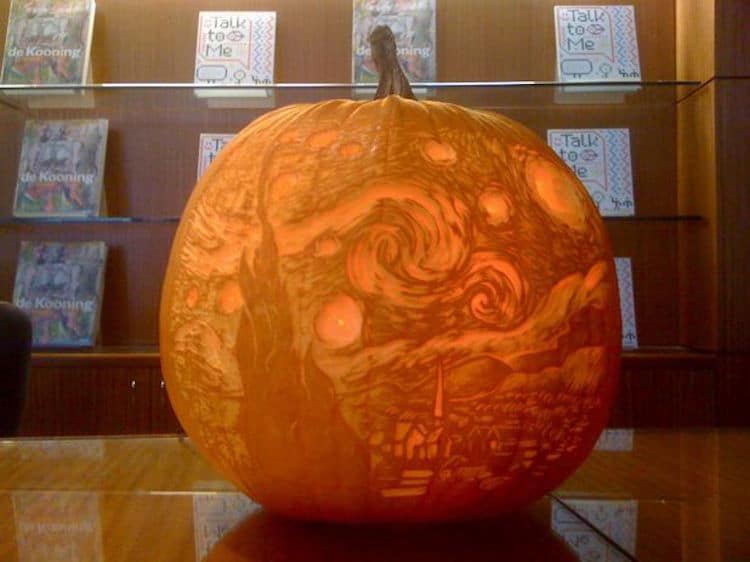
Read more: MoMA’s Starry Night Pumpkin
An Etch-A-Sketch
Eyelids
The Starry Night continues to resurface in new ways in the modern world.
With each passing year, it seems as though The Starry Night is reaching more and more fans and inspiring new generations of artists. Today, the renowned work of art is a must-have visual for art lovers, whether that’s in the form of a beautiful wall hanging, a statement-making watch, an inspiring decal, or a quirky action figure accessory.

Wall hanging on Amazon
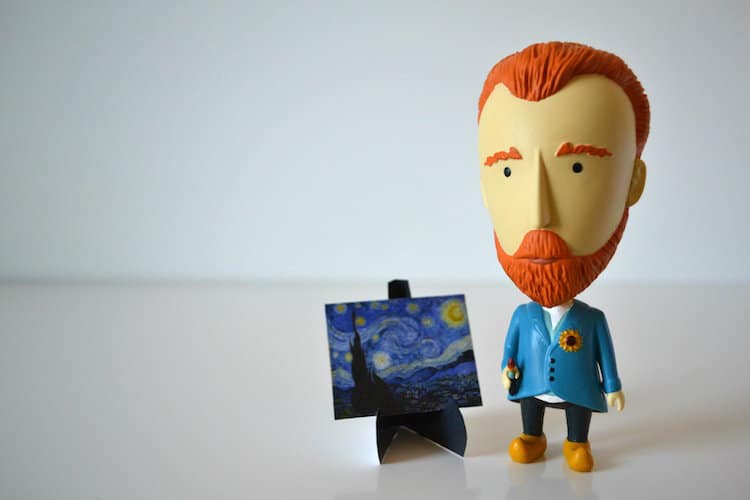
Van Gogh action figure on Today is Art Day
Read more: Cute and Quirky Van Gogh Action Figure Comes with Tiny Detachable Ear

Keyboard Decal on Amazon
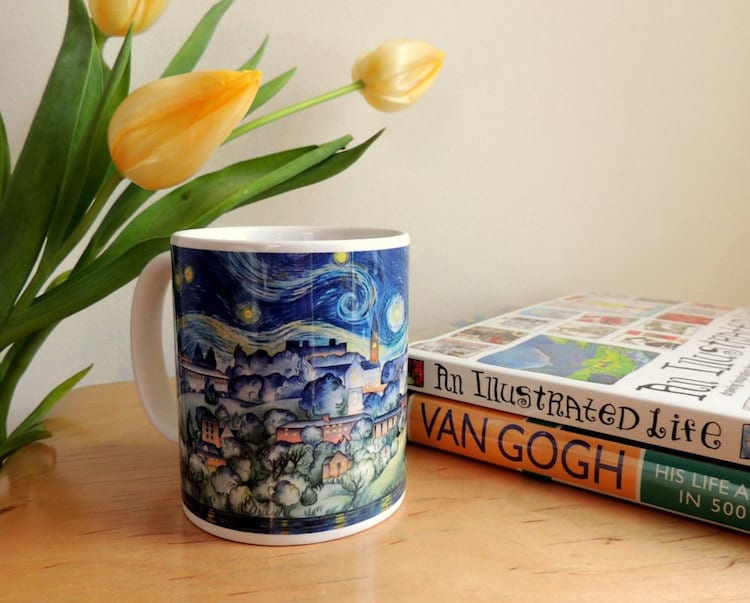
Coffee mug on Etsy

Umbrella on Amazon

Watch on Etsy

‘Star Wars Night’ print on Society 6

Skirt on Etsy

Puzzle on Amazon
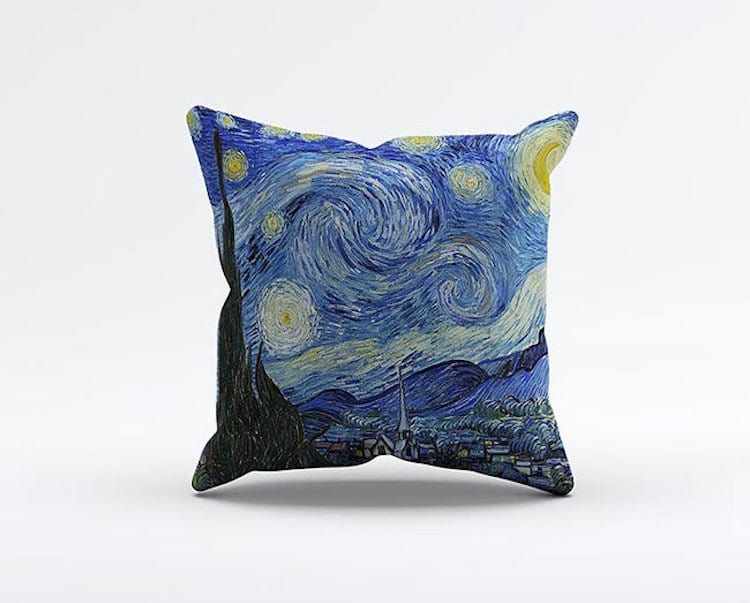
Pillow on Etsy

‘My Neighbor Totoro’ print on Etsy
Read more: Artist Reimagines Van Gogh’s ‘Starry Night’ with Pop Culture Icons
Ultimately, given its fascinating context, poignant history, and original aesthetic, it’s no wonder that The Starry Night has had such a transcendent impact on the world of art and, equally, on the world as a whole.
The post Art History: How Van Gogh’s ‘The Starry Night’ Came to Be and Continues to Inspire Artists appeared first on My Modern Met.
Source: mymodernmet.com
